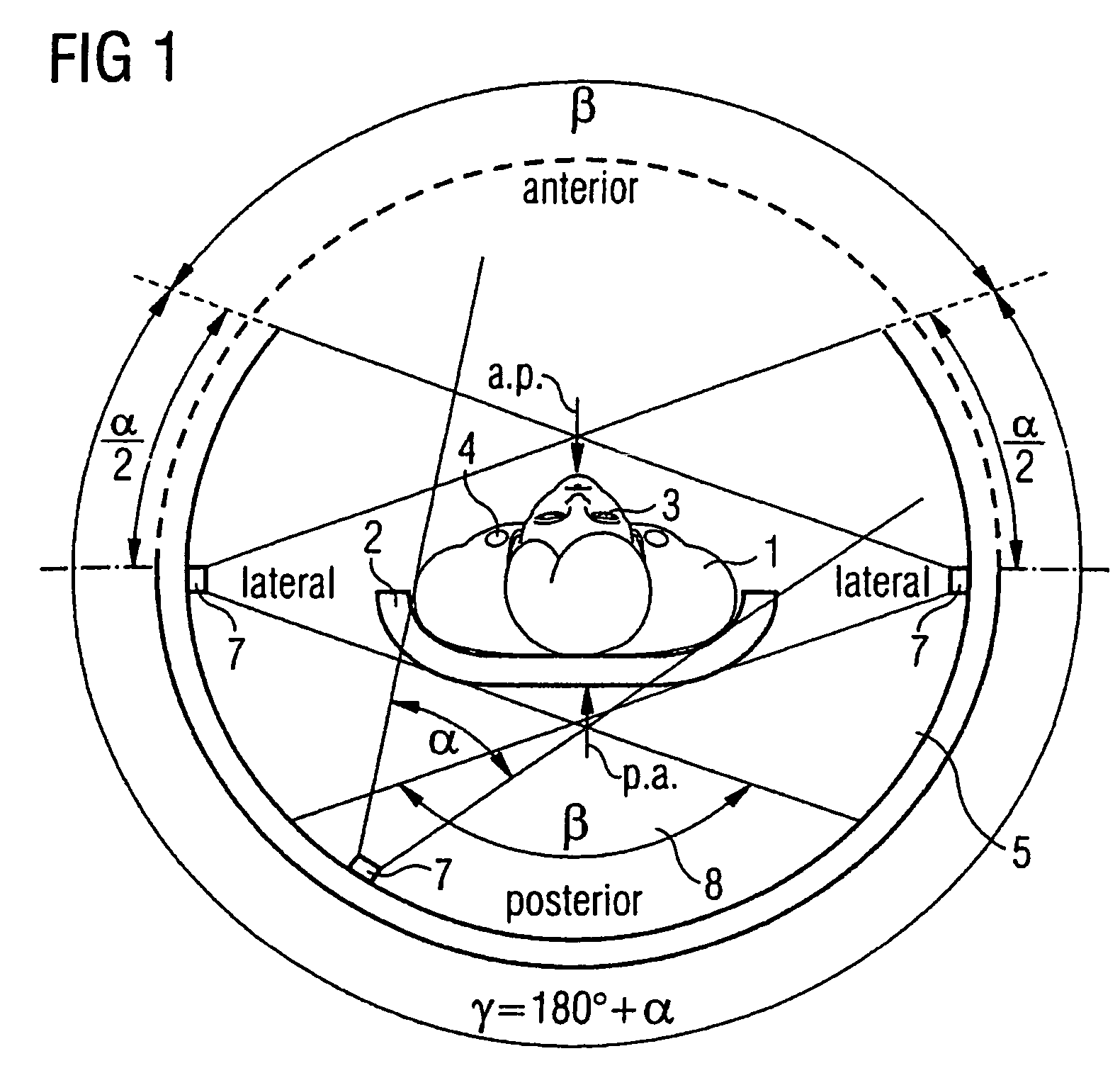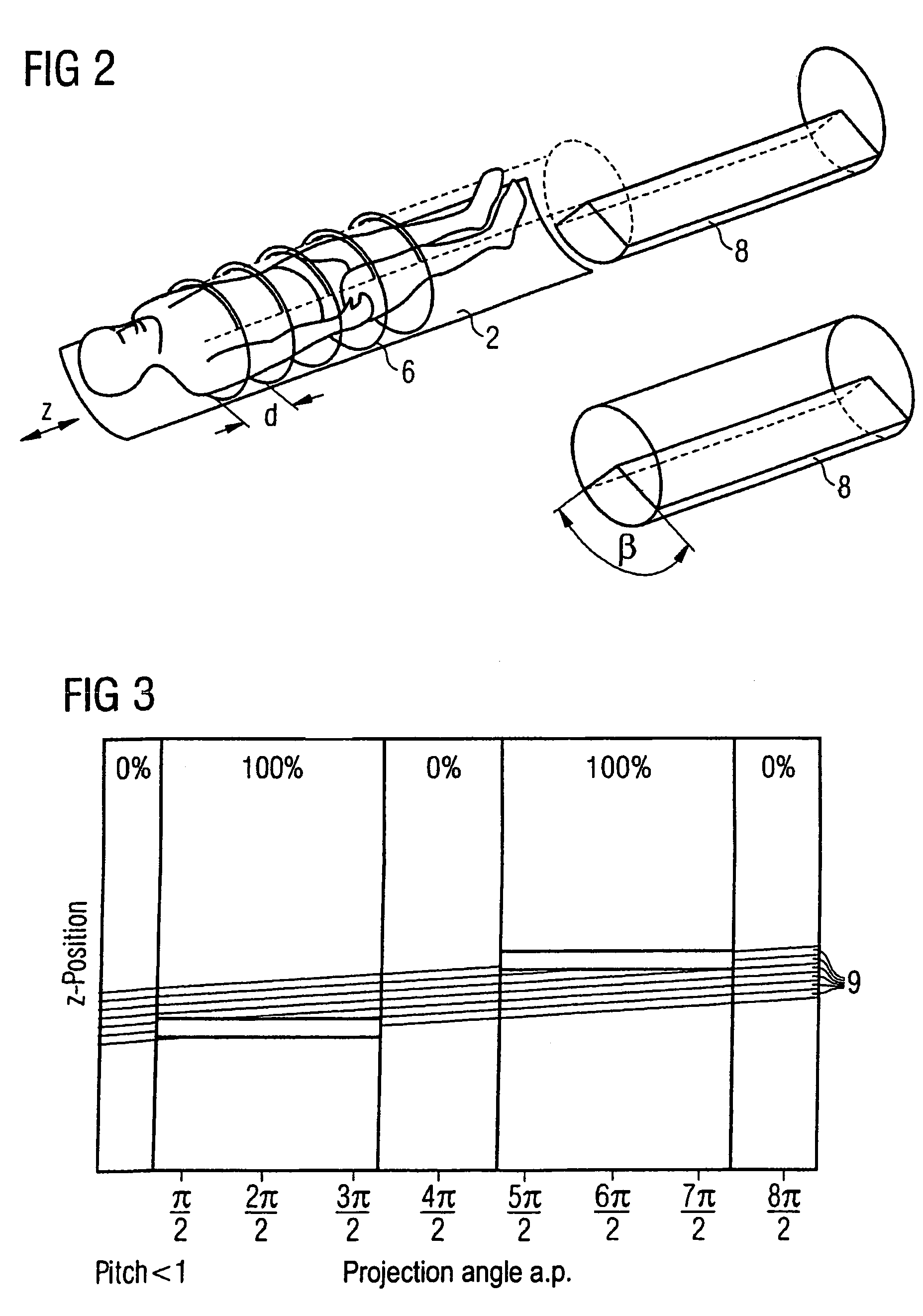Method for reconstructing projection data sets for dose-reduced sectional spiral scanning in computed tomography
a computed tomography and projection data technology, applied in the field of computed tomography, can solve problems such as cell damag
- Summary
- Abstract
- Description
- Claims
- Application Information
AI Technical Summary
Benefits of technology
Problems solved by technology
Method used
Image
Examples
Embodiment Construction
[0039]FIG. 1 schematically shows, in a front view, a patient 1 on a patient bed 2. The patient 1 lies on his or her back so that radiation-sensitive organs (such as the mammary glands 4 and the eye lens 3) are facing the upper area (anterior) of the gantry opening 5. The scanning takes place such that the X-ray tube detector unit (gantry) rotates in a circular manner around the patient 1 while the patient 1 is moved at a uniform speed (constant table feed d) along the patient's longitudinal axis z. The combination of the gantry rotation and the patient displacement results in, as shown in FIG. 2, a spiral-shaped or helix-shaped scanning trajectory 6 as is conventional in spiral CT.
[0040]An object of the present invention is, within the context of spiral scanning, to protect the aforementioned radiation-sensitive organs, or to expose them to the lowest possible radiation dose for the best possible image quality (minimal information loss). According to the invention, this is achieved ...
PUM
 Login to View More
Login to View More Abstract
Description
Claims
Application Information
 Login to View More
Login to View More - R&D
- Intellectual Property
- Life Sciences
- Materials
- Tech Scout
- Unparalleled Data Quality
- Higher Quality Content
- 60% Fewer Hallucinations
Browse by: Latest US Patents, China's latest patents, Technical Efficacy Thesaurus, Application Domain, Technology Topic, Popular Technical Reports.
© 2025 PatSnap. All rights reserved.Legal|Privacy policy|Modern Slavery Act Transparency Statement|Sitemap|About US| Contact US: help@patsnap.com



